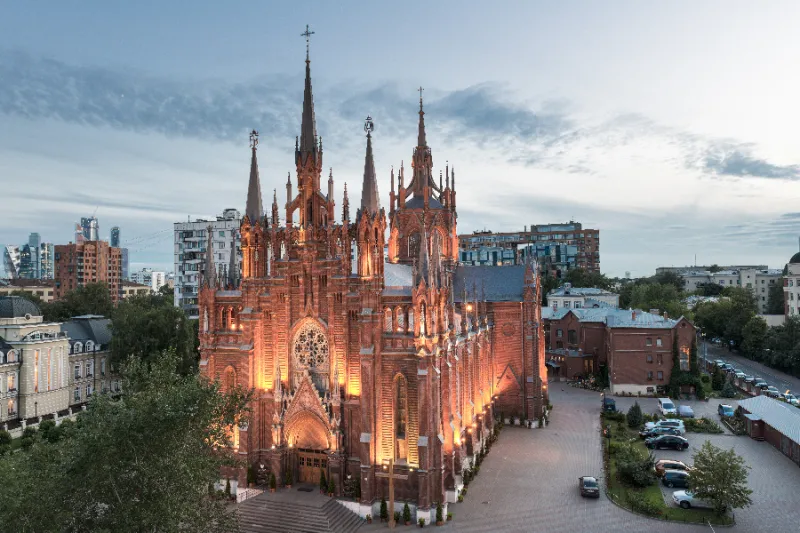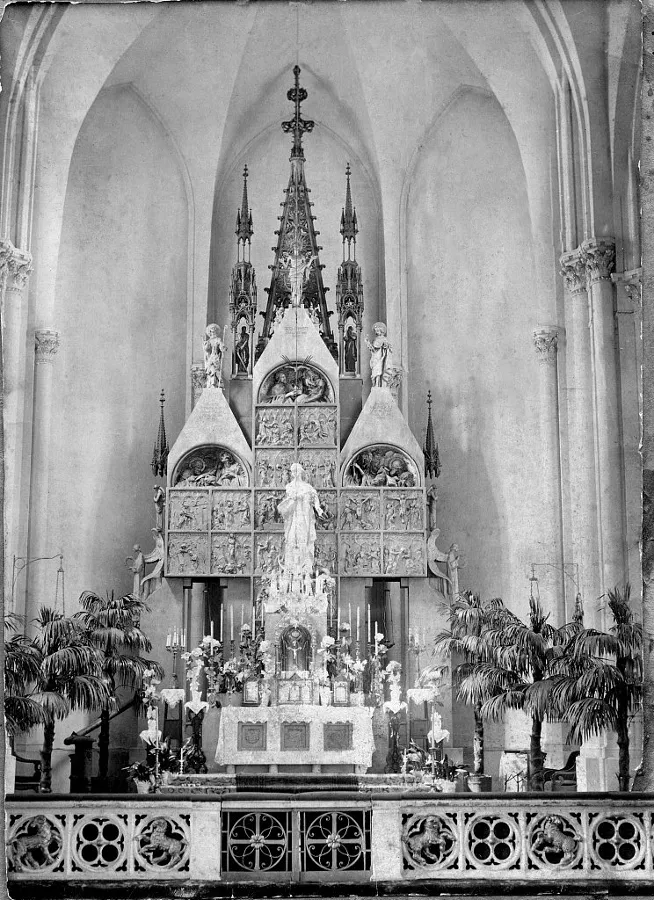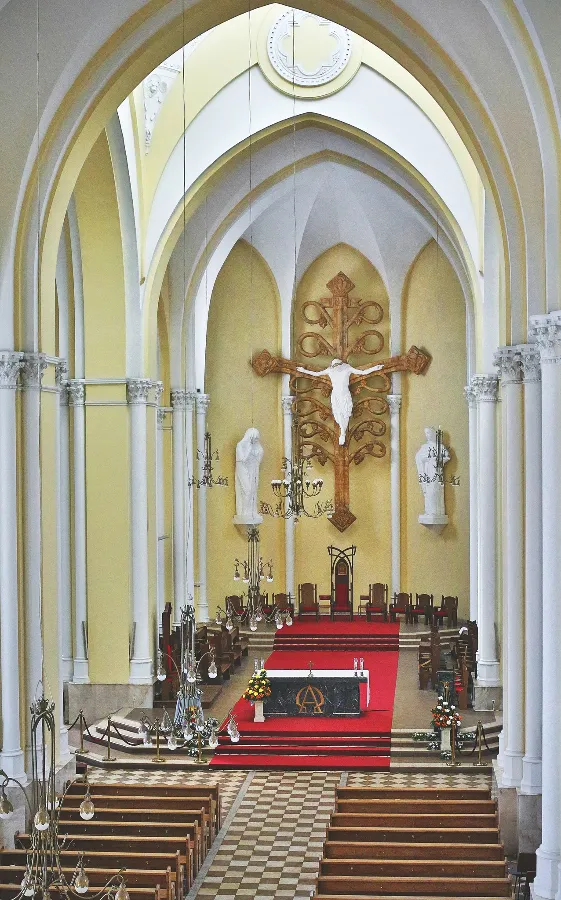
Rome Newsroom, Mar 24, 2022 / 09:15 am (CNA).
More than 15 years before Our Lady of Fatima asked for the consecration of Russia to the Immaculate Heart of Mary, construction began in Moscow on a cathedral dedicated to the Immaculate Conception. It was to be the largest Catholic cathedral in Russia.
The neo-Gothic cathedral was built before the Russian Revolution with a design by Foma Bogdanovich-Dvorzhetsky, an architect who had trained at the Imperial Academy of the Arts inaugurated by Catherine the Great.
At the time, Moscow’s Catholic minority population numbered more than 30,000, which exceeded the capacity of the city’s two existing Catholic churches.
Construction began in 1901 and lasted for 10 years until the church was consecrated on December 21, 1911, in the name of the Immaculate Conception of the Blessed Virgin Mary.
Father Mikhail Tsakul was the cathedral’s first rector. He came from a family with Polish roots. He had studied in the St. Petersburg Catholic Seminary, where he was greatly influenced by Servant of God Father Konstantin Budkevich — who was later executed on the night of Holy Saturday in 1923 for organizing non-violent resistance against the first Soviet anti-religious campaign.

As rector, Tsakul was repeatedly arrested in the years following the 1917 Russian Revolution. He was arrested in 1924, 1927, 1929, and again in 1931, when he was seized with a group of Catholic clergy and laypeople accused of “raising children in an anti-Soviet spirit.”
Tsakul was exiled to Tambov, central Russia, for two years before he was allowed to return to Moscow, where he resumed his ministry.
Less than five years after his return, the priest was arrested for offering Mass on May 3, Poland’s Constitution Day, at the request of the Polish ambassador. He was held in the notorious Butyrka prison for three months before he was sentenced to death.
He was shot dead on Aug. 21, 1937, and buried in a common grave with other victims of Soviet persecution.
Among the other martyr priests closely connected with the cathedral are Father Sergey Solovyov and Blessed Leonid Fedorov, who offered his last Easter Mass there before he died after years of labor in a gulag.
After the death of its rector, the Cathedral of the Immaculate Conception was closed in 1938 and its property looted. It would be more than 50 years before Mass was offered again inside the cathedral, which did not reopen until 1999.
During the atheistic Soviet era, the cathedral building housed a scientific research institute and its interior was completely changed so that it could be used as dormitory space for machine operators.
In 1990, Soviet authorities gave Father Tadeusz Pikus, a chaplain for Polish people working in the USSR, permission to offer Mass on the steps outside of the cathedral. Hundreds of people attended the outdoor Mass held in December in the bitter cold.
But it would be years until the cathedral building was returned to the Catholic Church.
Catholics in Moscow continued to attend Mass every so often on the steps of the cathedral, and later in its narthex, in the years that followed, until Archbishop Tadeusz Kondrusiewicz sent a letter to President Boris Yeltsin in 1995 requesting the previously authorized transfer of the cathedral to the Catholic Church be expedited.
In 1999, Vatican Secretary of State Cardinal Angelo Sodano reconsecrated the cathedral.
The following year, a statue of Our Lady of Fatima was crowned in the cathedral and a Eucharistic procession was held through the streets of Moscow.
Pope John Paul II prayed the rosary via teleconference with Catholics gathered inside the Moscow cathedral in March 2002.
On the 100th anniversary of the cathedral’s consecration, Benedict XVI said that the history of Moscow’s Immaculate Conception Cathedral was one of “redemption and suffering.” He described the cathedral as “a bright symbol of the strength of faith.”

Today, Masses are regularly held in the massive neo-Gothic cathedral in Russian, Polish, English, and French with as many as 11 Masses held in the cathedral on Sundays.
A priest said in 2017 that around 150 people are baptized into Catholicism each year in Moscow.
Archbishop Paolo Pezzi, who leads the Catholic Archdiocese of the Mother of God at Moscow, welcomed “with great joy and gratitude” Pope Francis’ decision to consecrate Russia and Ukraine to the Immaculate Heart of Mary on March 25.
The archbishop will offer Mass in the cathedral on March 25, the Solemnity of the Annunciation, and the congregation will watch and pray along with the live broadcast of the pope’s consecration from Moscow.
If you value the news and views Catholic World Report provides, please consider donating to support our efforts. Your contribution will help us continue to make CWR available to all readers worldwide for free, without a subscription. Thank you for your generosity!
Click here for more information on donating to CWR. Click here to sign up for our newsletter.




Leave a Reply